Smart factory/solution
Vision System
Core capability
-
Optimizing Acknowledging businesses and needs of customers for continuous R&D and providing solutions
-
Flexibility Prompt response to administration environments of customers and requirements from external entities
-
Scalability Increasing synergy between technologies based on experiences of applying diversified equipment and facility fabrication
-
Partnership Building a partner system capable of realizing and applying optimal designs for realizing mutual growth with customers
Image processing function
Alignment
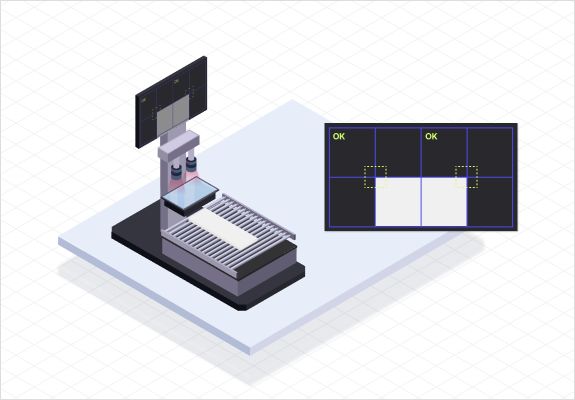
Products are aligned by rotating and moving to the desired position based on specific positions or reference points of products for purposes of processing, assembly, and measurement of products.
- Registering and editing marks for automatically recognizing and aligning when applying to multiple products
- Satisfying the requirements from various motion systems such as UVW Stage and DD motor
- Capable of calculating deviation from the specified position even for a single or two alignment mark(s)
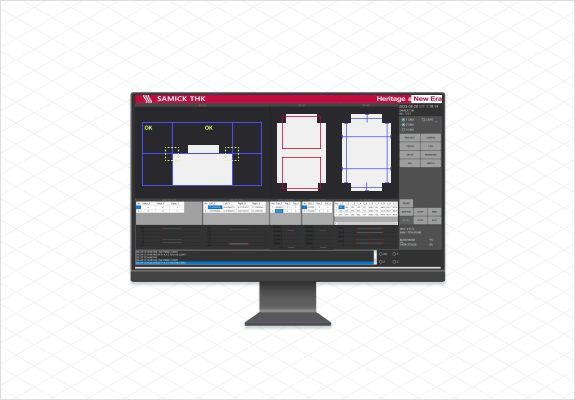
Inspection involves making sure that products are manufactured in compliance with design specifications or identifying defects with a camera, not by the naked eye, during production, distribution, and storage.
Inspections include apparent shape inspection and dimensional inspection.
- Implementing high data reliability, stable functions based on commercial libraries
- Vision inspection algorithm functions on a rule basis and through machine learning
- Configuring interface streamlining application and access by customers, providing the resultant data analysis function
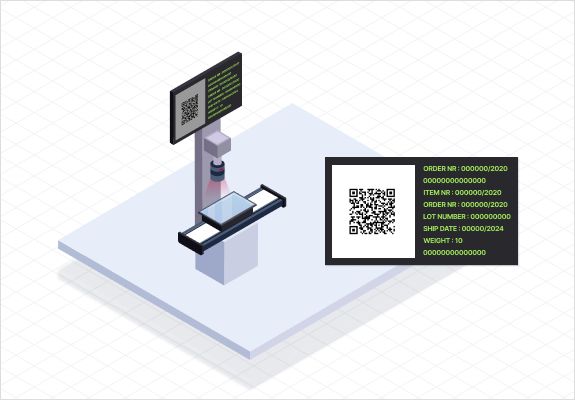
Various labels on products are read and managed by readers or cameras for production control and cognition of products. Functions include OCR, OBR, and OMR.
- Optimizing character recognition capability by estimating cursive letters and partial loss of letters through deep learning-based character recognition
- Improving the recognition rate through tailored algorithm responding to various printing media and shape deformation
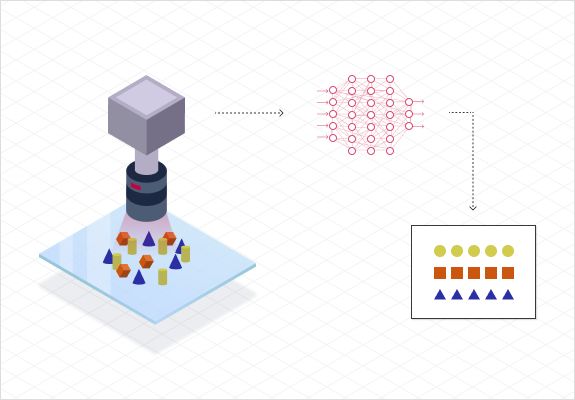
The technology precisely detects and classifies products in minute duration with high reliability through inspection and examination of products based on information learned from acquired images.
The technology also supplements the rule-based machine vision system.
- Significantly saving on learning hours by applying the recent learning algorithm
- Fastest inspection speed guaranteed through advanced model compaction and optimization codes
- Fabrication satisfying the requirements of customer systems by making use of C++/C# libraries
- Minimizing the detection failure rate and excessive rate of detection through recent data technologies for coping with difficulties of deficient defect data for learning
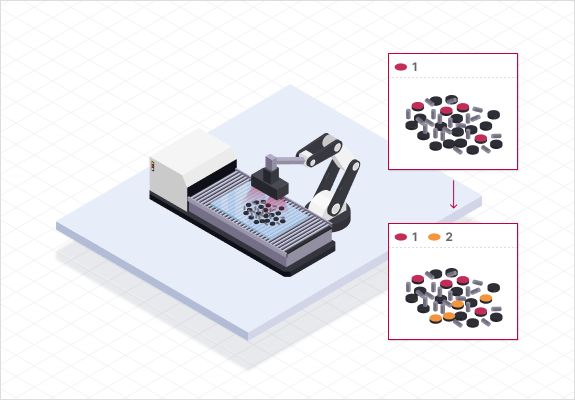
A 3D camera obtains images from various angles to provide information of objects such as volume, surface angle, flatness, and center point.
The camera detects spatial position and movement route through the 3D location detection algorithm for facilitating robot operation without additional programming.
- Allowing inspections that are not available with 2D vision; simultaneous inspection of 2D and 3D
- Generating routes in 3D space and specifying object grip through interaction with industrial robots to satisfy the requirements of industrial automation technologies
- Satisfying the requirements of smart factory, smart farm, and recyclable sorting systems in the near future
The machine vision of Vision System is a series of procedures of acquiring images with a camera, and then deriving the designed output from the acquired images through image processing. Basic components for acquiring best images including camera, lens, lighting, and image processing software are provided.
Applications
-
Secondary battery
Area camera and UV/IR lighting are used for position aligning for assembling electrode cells, and then judging success/fail by inspecting product conditions such as stacking, stacked status, surface, and dimensions.
-
Semiconductor & display
Vision inspection is used for defects from position calibration and assembly for post-process assembly and processing, conditions after processing, and processes in advance and assists in corrective actions. Area camera or line scan camera is applied depending on the system specifications, and lighting of UV/IR visible rays is used as adequate for inspection items.
-
Automobiles
An automobile consists of a number of parts, and the auto assembly line supports the assembly process of such parts. Machine Vision assists the auto assembly line of products by checking the positions of assembly by robots and verifying the assembly results.
-
Smart factory
The critical factor of smart factory is recognition of products, and data from such recognition is executed by QR code, data matrix, BCD, and OCR inspection. Such data recognition allows sharing of information generated from product manufacturing processes including tracking of product movement routes, conditions of products, assembly status, and inspection results.
Refusal to collect e-mail addresses without permission

The Company refuses the automatic collection of e-mail addresses posted on the homepage,
and any violation will be punished pursuant to the Act on the Promotion of Information and Communication Network Utilization and Information Protection, Etc.
All of the contents posted on the homepage of SAMICK THK are protected pursuant to the Copyright Act.
Subscribe to SAMICK Insights
*Required data
- Consent to
providing personal
information* -
- 1. Personal data items to be collected
- SAMICK THK (hereinafter "Company") processes the personal data items listed below:
- - Required data: Company, division, name, e-mail address
- 2. Purpose of collection and use
- Sending newsletters, management of subscription applicants
- 3. Entrustment of handling and processing of personal information
- The Company carries out the handling and processing of personal information by entrusting jobs to the following assignee for the purpose of providing customers with better services and facilitating the jobs:
Assignee: Welcome Associate Scope of entrusted jobs: Transmitting newsletters Entrustment period: Until the purposes of collection and use of personal information are achieved, or application for release of newsletter- 4. Period of preservation of personal information
- Your personal information will be destroyed without delay once the Company receives a notice of rejection of receipt of newsletter. Should the applicable laws and regulations stipulate preservation otherwise, the Company may not destroy but preserve personal information whose period of preservation and use has expired.
Note: You may withhold consent to the collection and use of your personal information, in which case the newsletter will not be sent to you.
to SAMICK lnsights is complete.
The Company will inform you of various news on SAMICK THK.




